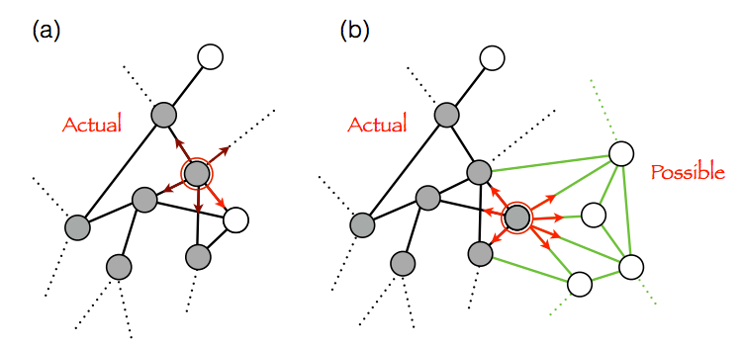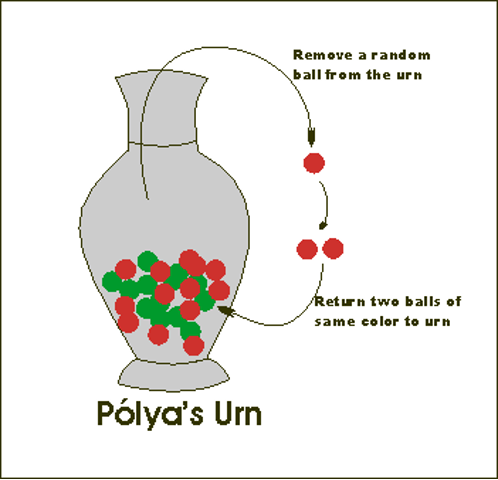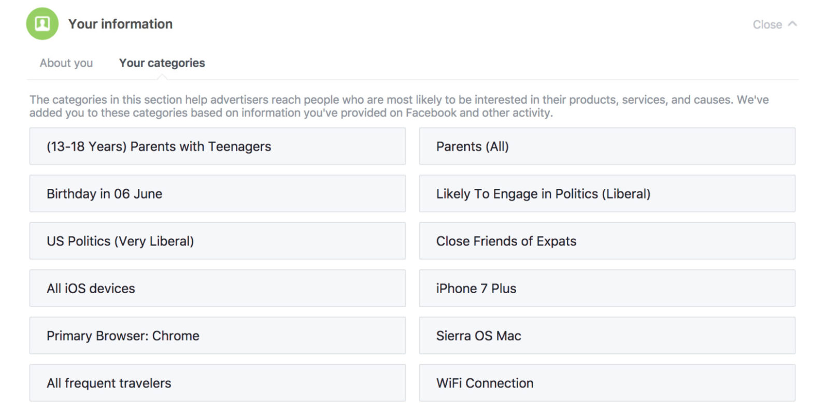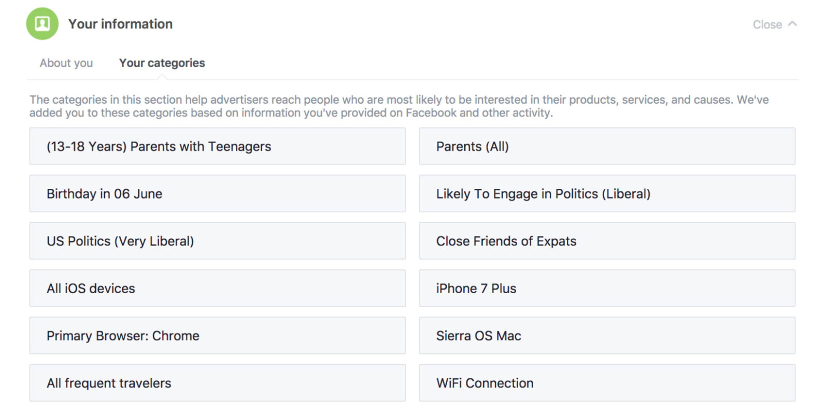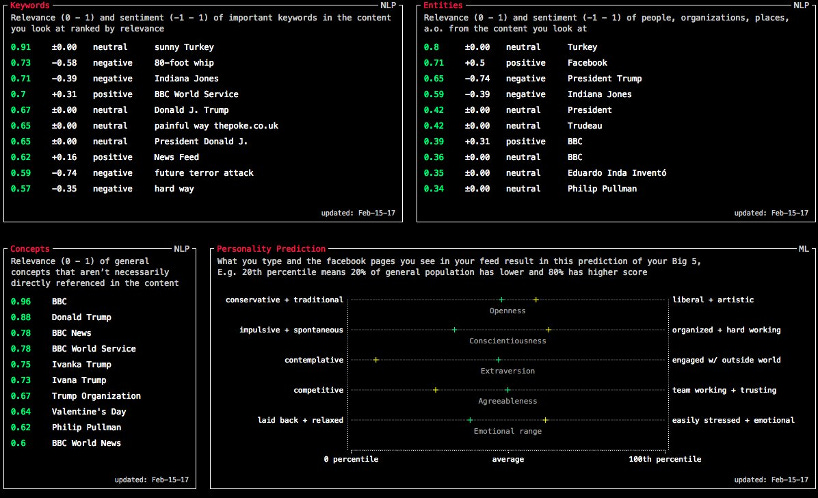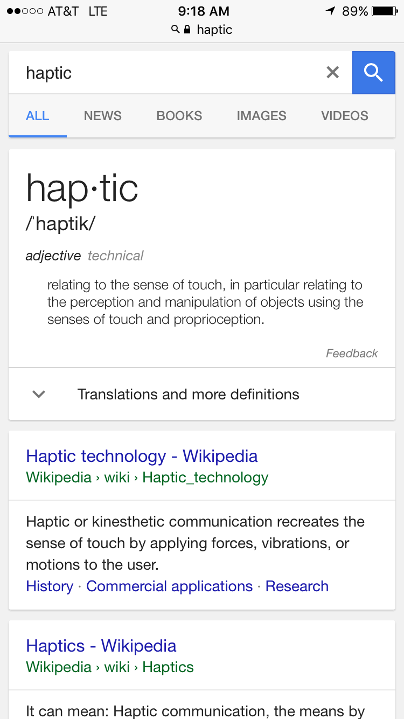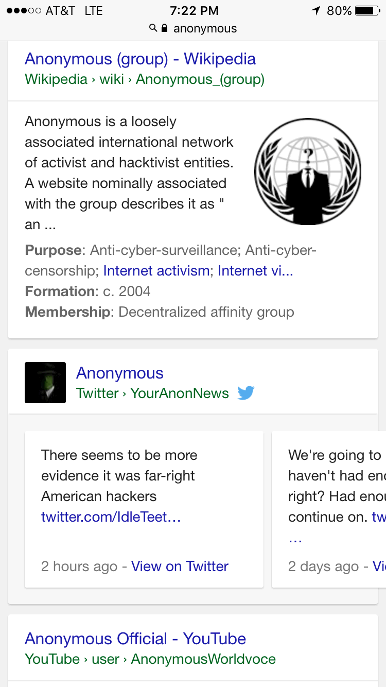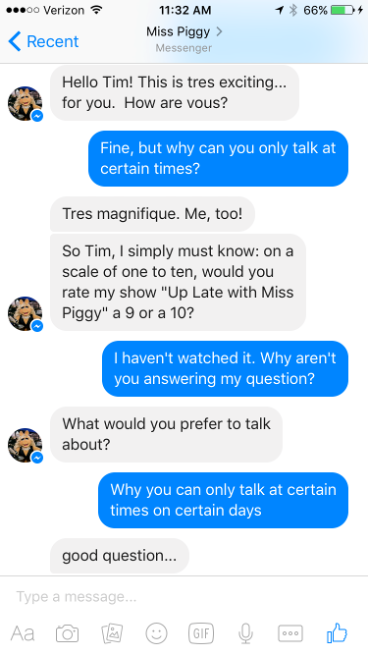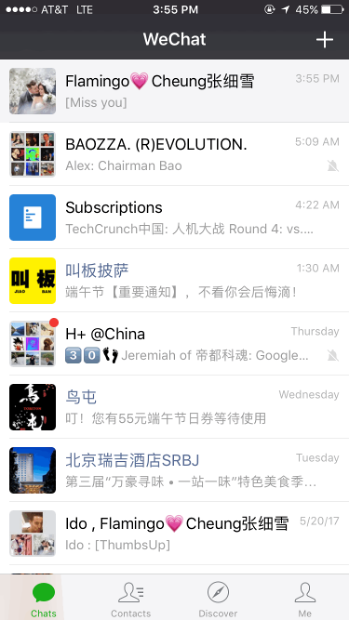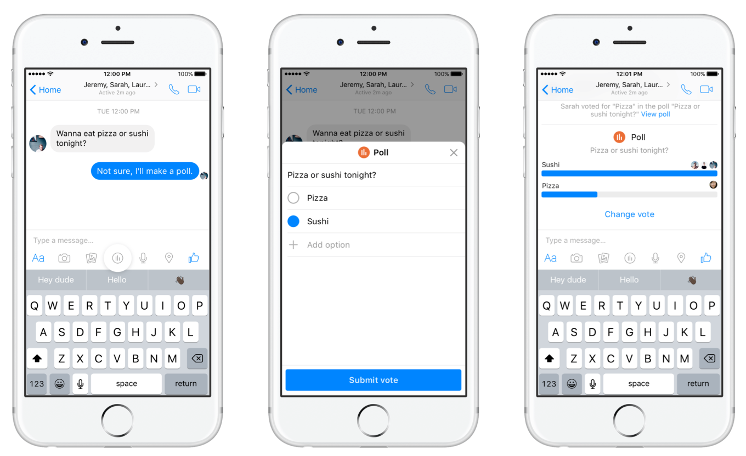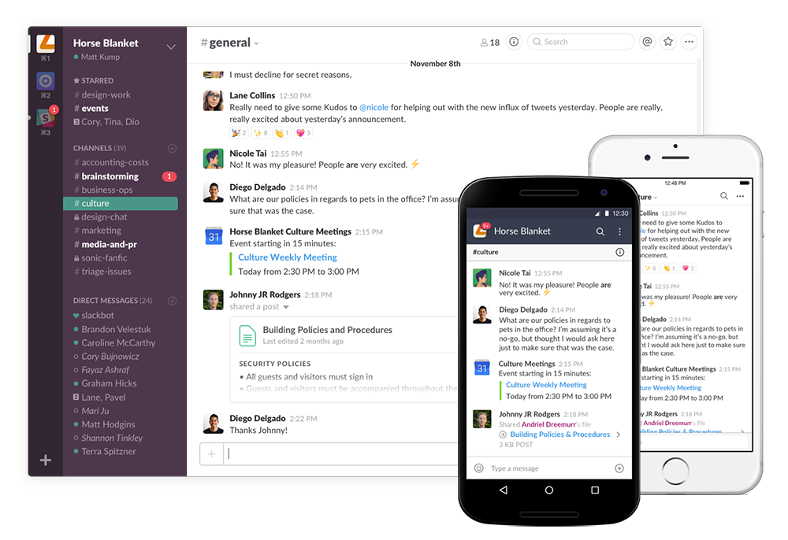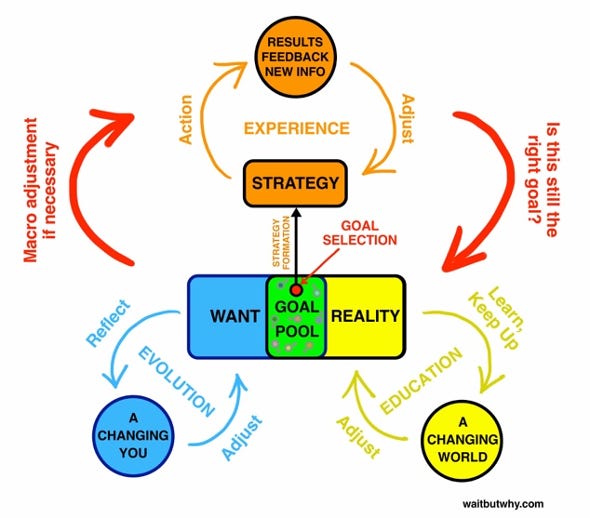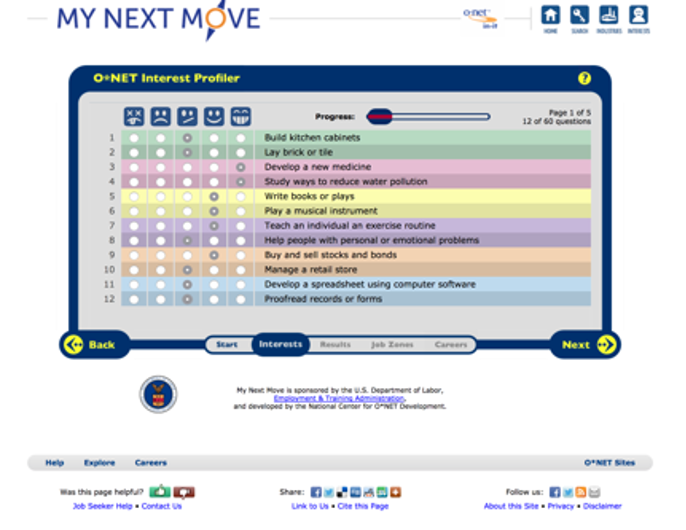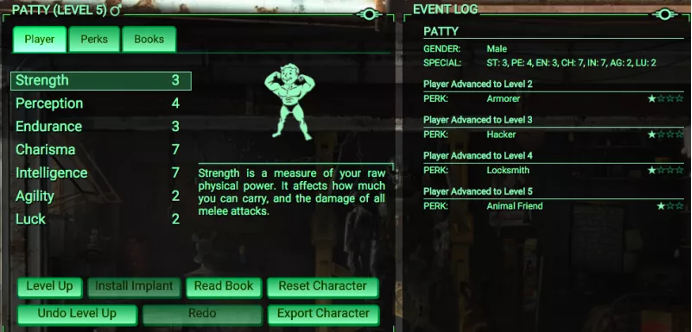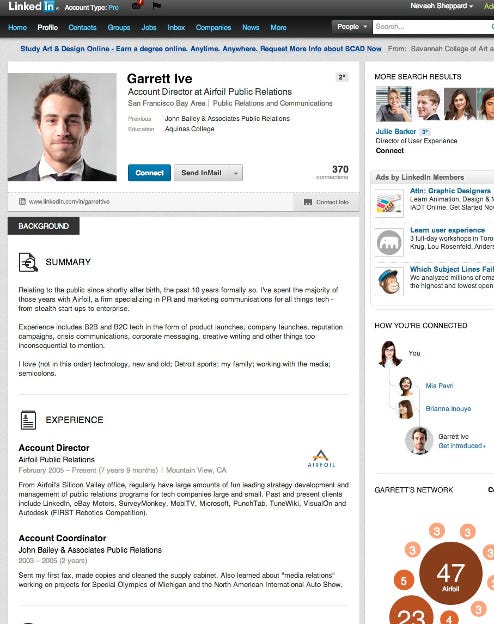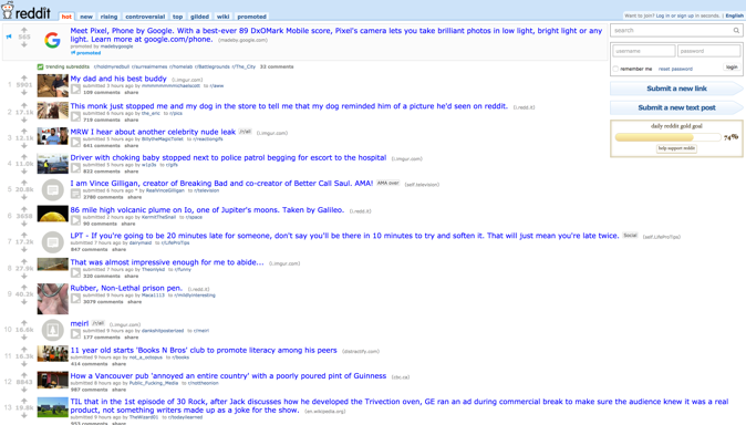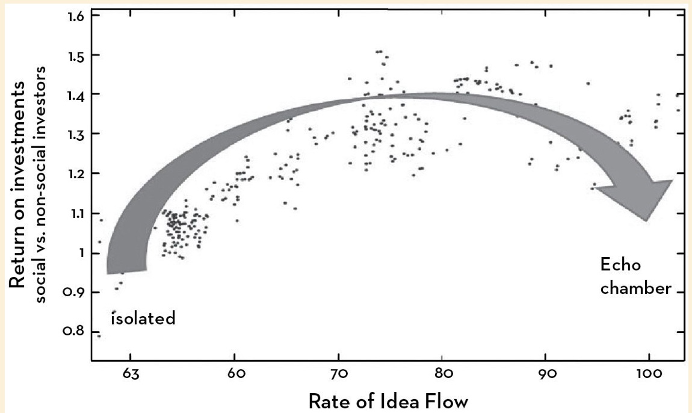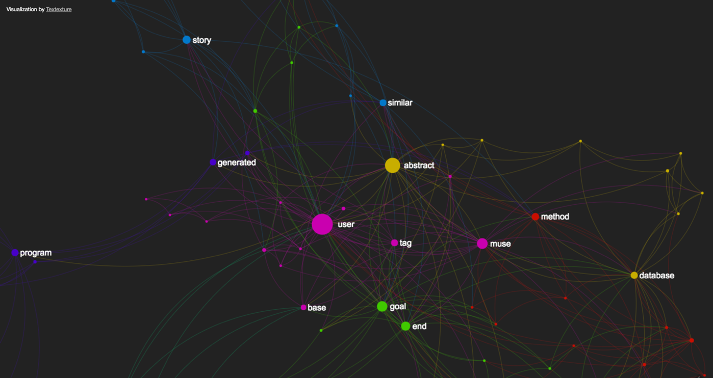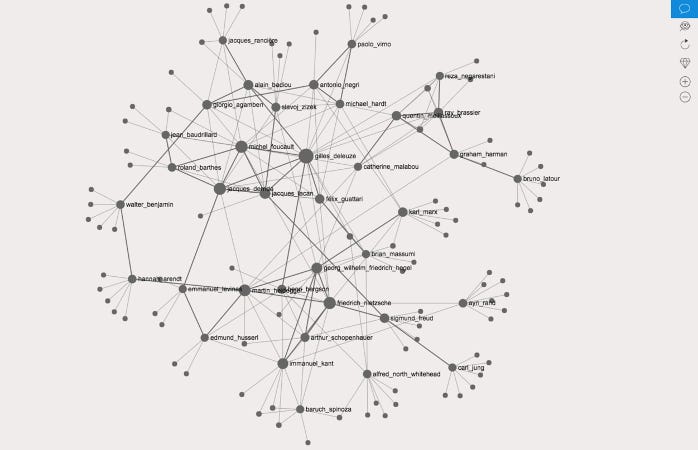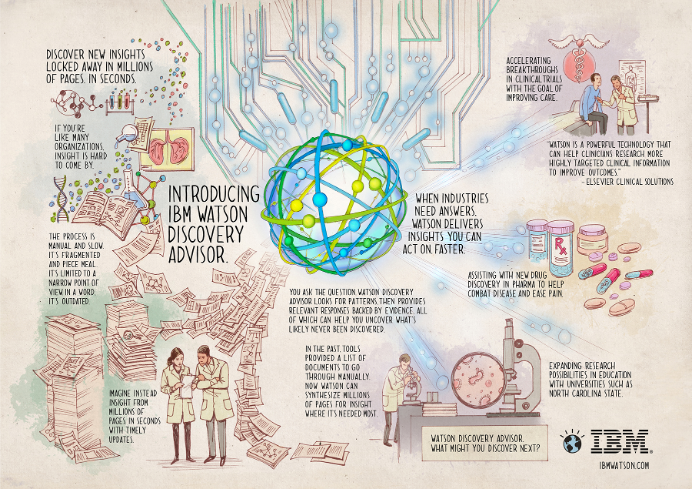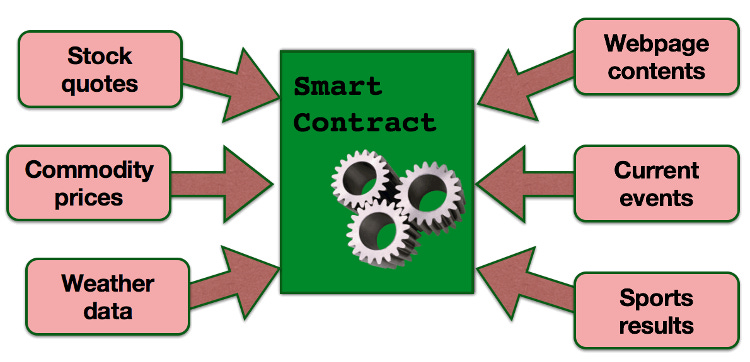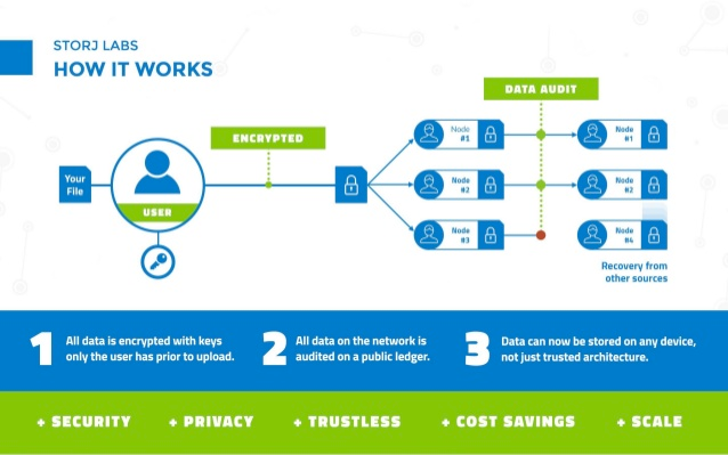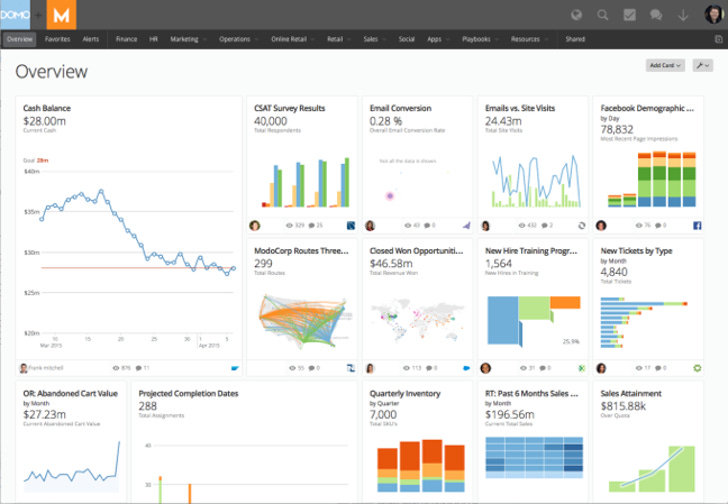Chris Banbury
June 2017
MUSE
The Engine of Opportunity
Opportunity is often wasted on pursuits with no particular purpose or goal beyond accelerating the passage of time. People tend to follow paths of least resistance which can lead to fixations on unfulfilling opportunities. Fulfillment necessitates discovering opportunities unique to an individual’s interests; to maximize the use of one’s time positively. This requires methods of efficiently informing people on available opportunities and helping them engage with that information.
MUSE (Multi User Serendipity Engine) is a Social Opportunity Platform where users discover and engage with individual and collective opportunity. MUSE is powered by scalable distributed computing and allows people to test ideas within feedback loops that encourage use because active users have stake and voice in the overall MUSE organization. MUSE allows people to maximize opportunity by pooling resources to engage within an ever growing system of questions and answers enabled by new methods of scalable search and community.
MUSE search means giving the user not only results they expect when searching questions traditionally on Google or Bing but also results outside the box. MUSE takes existing user knowledge, gleaned from sources like Facebook and Google, to help them engage with opportunity through search based upon the concept of the Adjacent Possible. The Adjacent Possible is a concept that “all things one step away from what already exists can arise from incremental modifications.” (Stuart Kauffman) MUSE search gives users not only results they would expect but also results Adjacent Possible. These results are not completely disparate as to encourage engagement because the path to opportunity needs to be easy. The goal is to produce serendipity and to enhance desired outcomes.
MUSE learns user’s opportunistic goals then pairs them with other users to engage collectively in groups called Hubs. Users work together, suggesting ideas and voting on those ideas, towards making their opportunities reality. Hubs are specialized, focusing on opportunities that may not stand alone themselves. They can be compared to specialized think tanks and are the first level of MUSE community.
MUSE Alliances are groups of Hubs that complement each other. The purpose of the Alliance is to take standalone nonactionable Hubs and match them with other Hubs to make opportunity actionable. Alliances are the second level of MUSE community.
The third level of MUSE community is Associated Capitalism, a form of Democratic Capitalism. In Associated Capitalism, users provide personal resources of their choosing, as Associated Capital, for use by the greater community and for a stake in that community. Contribution additionally gives the user the right to vote collectively in the guidance of MUSE through an organizational structure that ensures community is on equal footing with leadership when making decisions. It is a definition of true sharing that fairly addresses the human needs of community, ownership and productivity.
Privacy is paramount and transparency is key. Users share what they want with who they want and are protected through systems provided by blockchain related technologies.
MUSE is a scale free network that is enhanced by partnerships between humans and machines working together in a cyclical system where technology provides syntax and humans provide semantics. It gives people sovereignty over themselves through informed opportunity in a system comparable to a pluralist version of the XPRIZE Foundation. It is a future of work where technology becomes a utility, fading into the background, enabling personal fulfillment through ubiquitous informed opportunity.
Preface
Throughout history, many have proposed grand plans to change the world. What only a select few of those people realize is without a true beginning there is no way to attain an end. Change grows over time organically, sprouted from a single seed which then transforms into something greater.
This whitepaper is formatted to describe the growth plan of MUSE from a single seed through multiple milestones to what may or may not become something greater.
1. The First Milestone (and seed) is a system of Search. MUSE needs to first begin learning how people interact with ideas and how those interactions influence ideas and lead to divergent thinking. MUSE needs to fundamentally learn how to best answer people’s questions to help them engage with personalized opportunity.
2. The Second Milestone focuses on Chat and how people and ideas are matched. In the first milestone, people individually learn how to think outside the box. Humans, however, are communal animals and require input from other humans to think truly outside the box. Chat is based upon two people with similar interests but potentially differing perspectives sharing stories of intuition and experience.
3. The Third Milestone is how Community is generally formed. It takes chat between two people in milestone two and opens the system up to group chats. People gather around similar interests and think outside the box through collective input in Hubs. With more diverse input, echo chambers are less likely to take hold.
4. The Fourth Milestone is Greater Community. Hubs are matched with other Hubs to form Alliances to begin making opportunity actionable. A new interface is introduced and a platform agnostic chatbot which repurposes existing assets is launched. With more tools more action can be taken.
5. The Fifth Milestone is Credibility. Systems promote user confidence in their skills and the skills of others. Without confidence ideas cannot spread and opportunity sputters.
6. The Sixth Milestone is Backend. Security is established through blockchain enabled transactions. For ideas to spread and opportunity to flourish users must know ideas they create are theirs to do with as they please. An API is introduced to increase functionality.
7. The Seventh Milestone is A Social Network. Opportunity needs organic avenues of discovery beyond search. People are social beings and need social avenues to further discover opportunity.
8. The Eighth Milestone is Transcendental Search and Security. Search moves beyond the search bar and security is enhanced. Users deeply engage with search and focus on both unexpected and expected results.
9. The Ninth Milestone is Making Opportunity Real. Users take hold of opportunity through individual and collective analytics and make Alliances actionable. Alliances move from virtual action to real world action.
10. The Tenth Milestone is Associated Capitalism. It is an extension of modern capitalism that incentivizes and inspires by leveling the playing field through actionable opportunity.
A Scale Free Network
MUSE itself is a scale-free network. “A scale-free network is a connected graph or network with the property that the number of links originating from a given node exhibits a power law distribution.[1]” The MUSE system is itself scalable with the functionality of each node maintaining and building upon the features of the previous node. The 1st level of node within the MUSE network are the users.
The First Milestone: Search
Exposure to a variety of viewpoints is fundamental in discovering meaning in a world where technology is rapidly transforming opportunity. Technology is blurring the lines between freelancer and entrepreneur, expert and non-expert, demanding new ways for people to discover how they can enhance their own opportunity.
Traditional Search
In search, methods are used to rank validity of results before displaying them to the user. Google, for example, uses a variety algorithmic methods to determine what results to display. In the past, search was syntactic but Google now uses an algorithm named Hummingbird to make search more semantic. The key here is that the algorithm needs to understand generally the linguistic complexity of what the user is querying.
Even though Google understands the basic semantics of a query, it still gives the user what is expected.
Searching existing services like Google returns results tailored through a user’s past searches. Google learns what the user expects and gives them what they want. This creates echo chambers where someone’s exposure to new ideas is limited because search results are continuously whittled down to cater to their specific views. People continue to use the service because they feel validated in their viewpoints and there are limited alternatives. This is unenlightened superficial search.
MUSE Search
MUSE is enlightened search and gives the user not only what they expect but also results slightly adjacent to what is expected; to stimulate thought in divergent ways and produce serendipity.
Muse Version One
The Serendipity Algorithm
The Serendipity Algorithm is based upon Stuart Kauffman’s theory of the Adjacent Possible, which are “all things one step away from what already exists can arise from incremental modifications.”
Figure 1 Diagram of the Adjacent Possible
It is the MUSE search algorithm and is designed using a mathematical model called a Polya’s Urn with Triggering[2] which seeks to mathematically represent the Adjacent Possible.
A Polya urn is an urn containing balls of up to . . . different colors. The urn evolves in discrete time steps - at each step, one ball is sampled uniformly at random; The color of the withdrawn ball is observed, and two balls with that color are returned to the urn.[3]
Figure 2 Polya's Urn visualization[4]
A Polya Urn can predict expected innovations but does not count for the unexpected, or the Adjacent Possible because it has a lack of diversity. Polya’s Urn with Innovation triggering adds diversity to the color of balls. If a new color is removed, then an entirely new color is added to the urn. If a recognized color is removed, two of that recognized color are added back in.
Populating the Urn
Search algorithms require input of data as a baseline for suggesting search results. MUSE search first aggregates user data produced on services, like Facebook, to learn the background of the user. Facebook makes available that user data through their Graph API[5]. An API is code that allows multiple different systems to communicate.
Figure 3 Facebook's Graph API and user data[6]
MUSE then algorithmically filters the user’s Facebook Graph API data through a program similar to Data Selfie to gain an understanding of the data.
Data Selfie is a browser extension that tracks you while you are on Facebook to show you your own data traces and reveal how machine learning algorithms use your data to gain insights about your personality[7].
Figure 4 Comprehensive analysis by Data Selfie of a user's Facebook profile[8]
Figure 5 Further analysis by Data Selfie[9]
As pictured above, Data Selfie gives a comprehensive overview of a user’s Facebook persona based upon the data they themselves generate. This data gives MUSE the knowledge to personalize each user experience and guides the results of the Serendipity Algorithm.
It gives weight to specific sets of results tailored to the user. As the user continues to engage with both MUSE and Facebook, trends will emerge in relation to the effects each have on the other.
Agency and Echo Chambers
The Serendipity Algorithm gives agency to a user who may want ways to break free from echo chambers but do not have the ability on their own. Making the process of thinking outside the box easy will open up opportunity to a larger audience.
Searching with MUSE
The user searches for a topic on the home screen or selects from the constantly updating trending feed. The main differentiator in interaction from traditional search is that the user has two options for types of queries in one search.
User taps the magnifying glass icon for search outside their box and receives results Adjacent Possible. User holds the magnifying glass icon for results homogenous as identified in Data Selfie.
This requires haptic feedback. “Haptic feedback, often referred to as simply "haptics", is the use of the sense of touch in a user interface design to provide information to an end user.”[10]
Figure 6 Google mobile search. MUSE home screen is presented similarly
Results are displayed, similar in functionality and look to Google, as seen in Figure 6 and curated from reputable sources.
Trending Searches
To check trending searches, users swipe right. This is to check what other people are searching and to stimulate alternative avenues of thought.
Figure 7 Trending searches in Apple's app store. Representative of MUSE trending searches.[11]
The user can interact with links directly from either search or trending searches or save for later. Users can also save results to other services like Evernote or iOS Read Later.
Users can implement filter settings like no pornography or no graphic violence but most other content is visible to ensure echo chambers are not reinforced.
Constructing Serendipity
An algorithm is a representation of the people who build it. The MUSE Serendipity Algorithm is the basis for the overall MUSE vision and it needs to embody diverse views so multiple viewpoints are represented in the base product.
To that end, MUSE Version One will be built in summer 2017 by committee. A diverse committee is required because a programmer’s background is intimately tied to their methods of problem solving and creation
Data and Revenue
All individual user data is stored locally to the user’s device. MUSE only collects data on meta trends for advertising purposes and users can determine their advertising preferences.
Revenue is generated initially through advertising. Advertising is meant to be unobtrusive and will only be displayed in the trending searches section of MUSE. It will never be displayed in search results as to not directly affect the Adjacent Possible. Advertisement is the primary source of revenue through Milestone Nine.
MUSE Version One will initially be released as a mobile application.
Use Case Scenario
Susy had always been superficially into politics and if anyone analyzed her Facebook feed she would be considered left leaning. During the Presidential Election in November 2016, she did not vote. This apathy stemmed from a realization that her home state, Washington, had little effect on the outcome of the overall election.
‘Hillary will probably win anyways’ she thought. Her vote really did have no effect because Washington State has so few electoral votes.
Trump won, she got physically ill, and decided maybe it was time to give up on excuses and become politically engaged. How could she take action?
She began by searching Google but never found what she wanted.
She downloaded the new search app, MUSE because it was featured on the Apple App Store. She was intrigued by the promise of unexpected search results. ‘What’s the Adjacent Possible?’ she thought. She queried MUSE by tapping the magnifying glass.
What she discovered was a mid 20th century avant-garde French movement, the Situationist International (SI)[12]. She specifically focused on the SI emphasis on spectacle which is a critique of mass media and its role in capitalism. She delved deeper looking for ways to make her new knowledge actionable in the present day. She now had the seeds for her to take action in her own way.
The Second Milestone: Chat
New Features: Chat Between Two People
Without steady streams of new perspectives, the engine of knowledge production slowly grinds to a halt. This leads to echo chambers where existing knowledge is the only knowledge and other perspectives are immediately judged as wrong. Echo chambers cannot take hold as long as there is continuous injection of diversity.
MUSE by design initially focuses the user experience on the individual. It has been proven that individuals are more creative when they can initially brainstorm without group thought[13]. But strictly individual thought can lead to echo chambers and confirmation bias. Echo chambers limit opportunity because the user is only partially exposed to ideas.
While individuals may initially be more creative when thinking alone, injections of alternative viewpoints are fundamental in broadening perspective and producing serendipity. Alternative viewpoints are maximized when users from diverse cultural backgrounds engage together.
In MUSE this starts with chat between two people.
MUSE Version Two
In addition to search results as indicated in Version One, some links in Version Two are options to chat with other users who have searched similar questions. This is to give users the chance to look at viewpoints from the mind of someone who thinks differently than themselves but is curious about the same topic. Each user may have searched similar issues but may have slightly differing viewpoints.
Finding Chats
These chat links can be visualized like Rich Cards (dynamic content) in Google mobile search.
Figure 8 Twitter feed as dynamic content Rich Cards. In Viewpoints the user to user chat links would go here
The first chat link is based on geographical distance to simulate the experience of leaving one’s home town as locality also produces echo chambers. Following the first chat link, the other links are in descending order with furthest geographical distance link on top, descending to the closest.
Chatting
Users leave their responses through MUSE in app messaging through conversations visibly similar to a generic messaging service like Facebook Messenger
Figure 9 Facebook Messenger chat. Viewpoints is presented similarly[14]
These conversations are anonymous unless each party decides otherwise. Users can leave a conversation or block a user at any time. There is no language filter. Initially only textual exchanges with no linking will be available as to avoid improper conduct.
There is a 3 strikes rule for improper conduct. This results in permanent IP Address ban.
Messages disappear after 24 hours. The 24-hour limit can be extended by continued conversation with each time a user messaging, the life of the conversation extends by 24 hours. The purpose of disappearing messages is to avoid clutter and encourage engagement.
Figure 10 An example of WeChat in chat translation.[15]
Initially, both English and Chinese will be supported. This is to offer the greatest opportunity for both geographic and linguistic differences between users.[16] Multi lingual support with Google or Baidu translate is available if necessary.
Use Case Scenario
Xiao Wang lived in a small rural village in the mountains in Shaanxi Province, China. His family earned a living through farming their plot of land which was part of a greater village collective.
His parents were staunch believers in the government, taking to heart the narrative that to get rich is glorious but some must get rich first.
‘How can I get rich?’ he thought. He had recently searched about the new One Belt One Road (OBOR) initiative which is a modern reimaging of the ancient Silk Road. He had been searching through a new search app, MUSE, on his budget Android phone. Luckily MUSE had not been yet blocked in China because it posed no immediate threat to home grown Chinese search solutions.
MUSE correlated Xiao Wang’s MUSE search history from data combined with his profiles on Chinese social media. It knew he was a poor farmer in coal rich Shaanxi who was looking to get rich, perhaps through OBOR somehow.
Xiao Wang learned many things through search but the most important lesson he learned was when connecting through chat with an English speaking Pakistani national who had also been searching OBOR.
They began chatting, through in app translation, and it turned out the two were matched because of both OBOR and coal. The Pakistani was a coal expert and was able to verse Xiao Wang in how to identify obscure coal deposits.
Through this chat, Xiao Wang was able to gain enough knowledge to check his family and villages land for coal. He ended up discovering coal, was lucky to not get taken advantage of and got rich.
The Third Milestone: Community
New Features: Group Chat, Group Search and Group Voting.
Engaging with similar ideas between two people broadens horizons. Engaging with similar ideas between groups of people produces community.
In MUSE, group chat is diverse communities of individuals gathering around similar ideas in groups called Hubs. Hubs are the 2nd level of node within the MUSE network.
Hubs are highly specialized in topic. They are composed of experts and non-experts, enhancing ideas that may not have formed if membership was limited purely to credentials. A constant influx of new users and ideas inject diverse viewpoints to ensure echo chambers do not take hold.
Beyond chat, users engage more deeply with ideas by searching topics together and voting. By engaging ideas beyond search, the user begins to internalize by thinking through an idea over multiple steps.
MUSE Version Three
Group Chat
Group chat is functionally the same as existing group chat solutions like WeChat. Group chat options are mixed with one on one chats in the same interface.
Figure 11 WeChat displaying mix of single and group chats
Generating Hubs
Hubs are generated in two ways.
1. If specific topics are popular amongst MUSE users a HUB will be generated automatically. This is an extension of trending searches in Version One.
2. Users can also form Hubs themselves with a minimum of 5 founding members.
Joining Hubs
New Hub users come from three categories:
1. Users who have made closely related searches.
2. Users who have made related Adjacent Possible searches.
3. Users applying to join.
Users join Hubs in two ways.
1. Users join Hubs like they join chats between two people through interacting with Rich Cards.
2. Users join through in group voting.
Group Search
In group search, each member searches Adjacent Possible. Results are displayed to the Hub like a typical search in Version One except that each link is a unique user’s search result. This is to give other users direct exposure to diverse viewpoints and begins encouraging deeper thoughts on potentially alternative views.
Group Voting
User can create polls to vote on internal Hub matters. Requests are limited to one per 24 hours by each existing Hub member to avoid spam.
Hub members can vote on a variety of things. For example:
1. Allowing outside users join who were not matched automatically by MUSE.
2. Or they can vote on which of the group search results they like best.
Figure 12 Facebook in chat voting[17]
Use Case Scenario
The US-China Strong Foundation for years had been promoting learning of Chinese language and culture to Americans. It had positively affected hundreds of thousands of people by providing them opportunity beyond the confines of a singular language and culture.
Along with US-China Strong Foundation members, many MUSE users had searched Chinese culture and language. MUSE automatically generated Hubs around general related search topics. Some Hubs were strictly linguistic or cultural focused while others revolved around how to leverage multicultural knowledge for opportunity.
Opportunity is a general term so how could they specifically leverage their diverse skillsets? Hub members group searched for opportunity in relation to their skillsets. Each individual result was a unique path to opportunity based upon MUSE’s knowledge of the users. Some results were academic, some political and some business. Users voted on results they thought would maximize their skillsets.
Each result that garnered enough votes led to the creation of more topic specific Hubs based around those results.
Users were invited by MUSE to join those new Hubs and users also formed their own Hubs. Other users heard about these new Hubs, applied to join and were voted in.
Specialized discussions powered by diverse viewpoints emerged.
The Fourth Milestone: Greater Community
New Features: Interface, Alliance and Platform Agnosticism
MUSE is the power of unique individual creativity and intuition combined with collective greater goals. It allows individuals to ponder ideas within their immediate frameworks. It is universally collective in the sense that it blends multiple diverse approaches to collaboration and community. It lays foundations for sharing methods of diverse creativity from which everyone can learn, apply and collaborate. It enhances opportunity through people and ideas working together, refining and recombining for action and progress.
Hubs are communities of highly specialized ideas and members, typically requiring communal help to become actionable. Hubs are made actionable through membership in Alliances which are the 3rd level of node within the MUSE network.
Alliances are collectives of Hubs that complement each other and ways for communities to make opportunity actionable. Alliances enable open discussions and the ability to propose, debate and vote on anything.
The minimum size of an Alliance is two Hubs.
MUSE Version Four
Forming Alliances
Alliances make opportunity actionable. The meaning of actionable opportunity is different to everyone and Alliances are formed in three ways.
1. MUSE automatic formation. This is an extension of matching user to user for formation of Hubs in Version Three. MUSE analyzes local and global trends to determine what opportunities both the world and people in general want. MUSE then sends invitations to Hubs to join an Alliance.
2. Hubs put out a request to the greater MUSE network for help. If someone has a great idea they are welcome to garner following. The Hub requestor then votes on potential partners before officially forming an Alliance.
3. Hubs apply to join an existing Alliance. Existing Alliance members vote whether or not to let the Hub join.
Hubs can also be kicked out of Alliances through user vote.
The New Interface
As MUSE becomes more complex and feature rich, it needs to move away from a strictly chat based interface.
The new interface is similar to Slack, group productivity software, where multiple chat channels can be opened, items pinned and is customizable. The new interface maintains the overall feel and experience of the previous versions and lays the foundations for future features.
A PC version is also introduced. For search, double click for homogenous, single click for Adjacent Possible. The user experience remains the same across all platforms
.
Figure 13 Example of Slack, Multiple Channels, Multi-Platform, and Services[18]
Users interact with all of their search, collaborations, Hubs, Alliances, on any level through this interface. Hubs and Alliances can host public channels as means to request complimentary members and promote ideas.
Propose, Debate, Vote
Proposals and collaboration happen at each node of MUSE. The interface and functionality are based on the open source Loomio as seen below and allow users to get their voices heard. It is ultimately up to them to promote their ideas within the Alliance and the system.
Figure 14 The Loomio propose, debate vote dashboard[19]
Functionality includes users submitting, debating and voting on proposals. A proposal could be the direction of an Alliance’s purpose. Or it is the mechanism with which some Hubs can apply to join an Alliance. It is an extension of the simple voting mechanism in Version Three.
It is accessed through links from within chats in the new interface.
Platform Agnosticism
While MUSE itself expands its interface in this version, the chat based version will be repurposed to run as a chatbot, the MUSE Assistant. It will run on multiple different platforms such as Facebook Messenger, Apples Messages, WeChat, etcetera.
The MUSE Assistant has functionality similar to Version Three. It is platform agnostic because it runs ubiquitously across multiple platforms with little effort.
Figure 15 Chatbot within a Facebook group chat[20]
Platform Agnostic Revenue
There is significant available revenue through advertising partnerships on 3rd party platforms. This is because MUSE and the 3rd party platforms can share data with which to co-advertise.
Use Case Scenario
A Chinese Linguistic Hub spawned from Milestone Three was matched with climate activist Hubs, climate journalist Hubs, climate scientist Hubs and others to join a greater climate change Alliance with various international members.
The Alliance was based around how to leverage and communicate knowledge of climate change solutions in a world where governments may not be taking responsibility.
Users proposed ideas, such as which climate change topics to focus upon. They voted and decided that battery storage technology is integral to bringing the cost of solar power down towards rock bottom. The cheaper something is the easier it is to adopt.
The Alliance then opened a public channel through the new interface to find Hubs with knowledge of battery technologies. Relevant Hubs joined, more proposals were debated and voted on. It was decided that action could be taken.
The climate change Alliance further solicited help from a Hub of climate business law professionals to begin drafting agreements between private international institutions beyond the total influence of government. As the Alliance grew in popularity, so did its influence on enacting actual change.
The Fifth Milestone: Credibility
New Features: Statistics, Credibility and Identity
Engaging with opportunity starts out simple but grows in complexity over time as users join Hubs and Alliances. Knowledge and opportunity grow in reaction to new interactions and experiences. Questions are asked and answered in a cyclical system of refining goals and opportunities until action can be taken.
Figure 16 Process of idea refinement. credited to Tim Urban at Waitbutwhy.com.[21]
For this system to work, users must be credible and known. Before a user can be credible and known they themselves must understand their actual goal when using MUSE.
MUSE Version Five
Determining Opportunity
To be productive in harnessing opportunity, one must first understand their interests and passions. Once someone understands what they actually want to do they can dedicate themselves to a goal. This goal is what the user wants to get out of their engagement with MUSE.
Peter Diamandis, founder of the Xprize, has a series of basic high level questions in relation to finding your passions. Below, are those questions expanded for MUSE to use in engaging the user conversationally.
1. Are you laid back or emotional?
2. Are you liberal or conservative?
3. Do you like things organized or chaotic?
4. What are your passions?
5. If you don’t know your passion, try a variation of the below mind experiment to find it by asking yourself:
a. What did you want to do when you were a child? What was your childhood passion? Is there something real there?
b. If someone gave you a billion dollars today and told you to spend it on improving the world, what would you do with it? Search for the technology, tool, or problem you’d apply it towards.
c. Who is your role model? And what are their passions?
d. What is an existing project that inspires you?
MUSE then connects and compares the user’s answers to 3rd party datasets like the Facebook Graph API mentioned in Milestone One. As stated, these services already have baseline knowledge of the user and integrating them provides a more complete picture of the user’s general interests profile.
The combined data of the user’s goal plus existing baseline knowledge is then fed into a system similar to an Interest Profiler. An example of an interest profiler is The O*NET Interest Profiler.
“The O*NET Interest Profiler (IP) is a family of self-assessment career exploration tools that can help clients discover the type of work activities and occupations that they would like and find exciting. Clients identify and learn about broad interest areas most relevant to themselves. They can use their interest results to explore the world of work.” [22]
Figure 17 Rating interests in O*Net
Figure 18 Output of O*Net Interests Profiler into Strengths and Weaknesses
MUSE tweaks this Interest Profiler system to help the user discover strengths and weaknesses in relation to their goal.
Visualizing Credibility
These strengths and weaknesses are then categorized into MUSE Statistics. Statistics give an indication of the user’s strengths and weaknesses and can increase or decrease depending upon user interactions.
Fundamentally, this process can be compared to a cross of a role-playing game questionnaire with online aptitude/interest’s tests with the ultimate goal of constructing a profile to engage fully with personalized opportunity.
Figure 19 Fallout 4 player statistics generator
The user monitors the relations of their actions to effects on Statistics. Instead of categories like strength or intelligence, MUSE categories inspired by International Baccalaureate Areas of Knowledge are used:
1. mathematics
2. natural sciences
3. human sciences
4. history
5. the arts
6. ethics
The above can be further broken down into sub categories tailored to the user based upon their interactions within the system.
Solidifying Credibility
There are multiple actions that can increase user Statistics with all sources weighted differently. For example:
1. Collation of user data and experiences.
a. Credible
i. For example, official transcripts form existing accredited programs and bootcamps.
b. Less Credible
i. For example, user data based upon actions on Facebook, LinkedIn, Google, other social networks etc.
c. In between
i. For example, endorsements from other users
ii. Interactions within the MUSE system
The User Profile
The MUSE user profile is similar to LinkedIn, a professional social networking platform. The overall functionality is nearly a clone of LinkedIn. Users display their personal background and can list credibility’s. Users can be endorsed by other users and recommendations for collaboration can be made.
One differentiator is instead of simply listing jobs, education and projects, user Statistics are also listed as credibility. Statistics are live so users can monitor each other’s credibility in real time.
Figure 20 LinkedIn user profile
The contents of a profile are a method with which MUSE connects users to Hubs beyond search data.
Important Information about Anonymity
Users can remain anonymous while they use MUSE individual services. However, when they join a Hub or the collective in general, they must have their identities vetted for accountability purposes.
Use Case Scenario
Sam was a 40-year-old paralegal working for a major law firm in New York City. His work days consisted of pouring over reams of legal data both in print and more recently digitized on the computer. Sam was also a tech geek and fully aware that his job was ripe for automation. What legal correlations could he make that an algorithm could not nearly instantaneously?
He had always had an interest in biology which was rekindled recently by his aunt’s lymphoma diagnosis. How could he, a paralegal, learn enough to perhaps help his aunt?
A friend introduced him to a new platform, MUSE. He was told he could investigate opportunities based upon personal passions.
He first searched lymphoma then engaged in questions and answers with MUSE. His base user profile and statistics were set.
He was then matched with multiple Hubs and eventually landed in a naturopathic lymphoma Hub. Most members of the Hub were non-experts, with little actual actionable knowledge and skills beyond the desire to help. They debated options and settled on the idea that they need to learn more actionable knowledge in relation to lymphoma research.
They contacted and were accepted into a social learning Alliance. This social learning Alliance was based specifically around educating people broadly enough for them to have the tools for making serendipitous connections.
The lymphoma Hub was connected to a variety of Hubs within the Alliance to help Hub members in raising Statistics. Knowledge was gained, recombined and new ideas emerged from diverse inputs. Sam began wondering how his MUSE Statistics could become truly credible in the real world. Could they help him switch careers?
The Sixth Milestone: Backend
New Features: Security and API
As users learn and become more credible, they need to feel secure in sharing knowledge. Without trust, opportunity is limited.
MUSE uses blockchain technology to facilitate trust and secure intellectual property. The blockchain is an electronic distributed ledger or database that secures data through methods of consensus.
Furthermore, methods for MUSE to connect to other services and for other services to connect to MUSE enhance opportunity by extending functionality and usability of a base MUSE product.
MUSE Version Six
Many associate blockchain with cryptocurrencies (a digitally encrypted currency) like bitcoin.
Cryptocurrencies are just one of the applications of blockchain. Most applicable to MUSE at this Milestone is to ensure users are protected when sharing ideas. Sharing is a contractual agreement and one application of the blockchain beyond cryptocurrencies are Smart Contracts.
A Smart contract is a term used to describe computer program code that is capable of facilitating, executing, and enforcing the negotiation or performance of an agreement (i.e. contract) using blockchain technology. The entire process is automated can act as a complement, or substitute, for legal contracts, where the terms of the smart contract are recorded in a computer language as a set of instructions.[24]
Smart contracts replace the traditional transactional system that is composed of multiple layers of inefficient middlemen. They make scalable transactions simple as transactions are completed strictly through code and secured in the blockchain.
The Cosmos Network
MUSE leverages blockchain technology to secure multiple blockchain ledgers within a single system because like all MUSE systems, the blockchain solution must be scalable.
The Cosmos Network provides such a scalable platform and deems itself the Internet of Blockchains because it supports the interoperability of multiple distributed blockchain ledgers.
The first application of blockchain in the MUSE system is deployment of Smart Contracts through the Cosmos Network. This is the first step in securing intellectual property (IP) between HUB and Alliance Members. Securing IP is crucial in making users feel comfortable in sharing ideas and opportunities.
Intellectual Property
Users do not have to share their IP until they join a Hub. To share freely, users must trust each other. When the user joins a Hub, a Smart Contract is put in place to secure IP and help start trust.
Each Smart Contract from user to Alliance is an agreement based upon Prior Art[25] and patent law.
Prior art is any evidence that your invention is already known. Prior art does not need to exist physically or be commercially available. It is enough that someone, somewhere, sometime previously has described or shown or made something that contains a use of technology that is very similar to your invention.[26]
The MUSE Smart Contract system is based upon creative commons applied on the Hub and Alliance level.
(A) creative commons is a set of various licenses that allow people to share their copyrighted work to be copied, edited, built upon, etc., while retaining the copyright to the original work (often used attributively).[27]
Through this method, Hubs can also determine what they want to share with Alliances because Hubs can be part of multiple Alliances as long as they keep contributing and can separate IP.
The MUSE API
Like the Facebook Graph API mentioned in Milestone One, MUSE needs a way for other services to connect to and access MUSE data. This is so users can integrate services like Evernote, Google Drive, Office 365, etcetera to enhance their MUSE experience.
The Seventh Milestone: A Social Network
New Features: Social Networking Tools
Up until this point social features have been limited. To open opportunity on a greater scale, opportunity needs multiple pathways with which to be discovered. Hubs and Alliances are islands in a sea of potential opportunity. To further maximize their potential, they must be easy to find and then connect. Social networks provide organic methods for opportunity to take hold.
MUSE Version Seven
The MUSE social network is a combination of Reddit, Facebook and Etoro’s Openbook. Reddit is a social aggregations platform where users submit news and ideas which are ranked and rated. Etoro is an online investing platform and OpenBook is their social network for collective trading and trends.
Trends and Filters
User can filter by Hubs, Alliances, and users and manipulate a variety of other search metrics to be displayed in a dynamic social feed. The feed can also be live, paused, or set to refresh at user specified intervals.
Figure 21 Reddit Homepage showing submission ranked by popularity
Following and Discovering
Users can follow, other users, Hubs and Alliances through general search. This is to find others users engaged in both similar and complementary opportunities. The user network is presented visually as a combination of Facebook’s News Feed and Etoro’s OpenBook.
Figure 22 Etoro Openbook showing trending users
Determining Popularity
Populating a social feed properly requires a proper mechanism with which to determine what the user sees or does not see.
MUSE uses the concept of Social Physics to guide the Serendipity Algorithm in deciding what to show the user. “Social physics is a quantitative social science that describes reliable, mathematical connections between information and idea flow on the one hand and people’s behavior on the other.[28]”
Figure 23 Social Physics concepts applied to the social trading site Etoro. Helps find a median for maximizing spread ideas (opportunity) and avoiding echo chambers.
Use Case Scenario
A Hub of democrats were sick and tired of their party sitting back and not preparing for the 2018 midterms. The general consensus in the Hub was the democrats should be taking a firm stance against tyranny. The Hub established Make Democracy Actionable Alliance with other Hubs.
Over many debates the Alliance’s public policy went viral. Various Hubs applied to join. Hubs debated on what a solid public policy going in to the 2018 midterm elections could be.
With policy decided and formed in to a clear message the Alliance needed to disseminate that message to the general public beyond MUSE. The problem was how do you make disparate groups of people understand a singular message?
It was then voted upon to solicit Hubs of vastly different backgrounds, from Appalachian Rust Belt Hubs to diverse immigrant Hubs. The proposal was that if enough of a representation of diverse groups could be achieved, then a general message could be agreed upon from within the Alliance to then present to the general public. The proposal was passed and its contents secured in a smart contract.
A video production Hub was matched with the Alliance to develop media for distribution of the message.
Work began. But was it in time for the 2018 midterms?
The Eighth Milestone: Transcendental Search and Security
The Abstract, Blockchain and Decentralized File Storage
The general process of search is active but superficially engaging. Results are displayed and users click links.
The users journey is ever growing and changing. As new paths are taken, new ways to analyze and enhance that journey are required. As users work through this process, they need further security to protect their ever growing pool of data and methods to make that data as rich as possible.
MUSE users engage more deeply with search through an ever growing summary of the user’s journey. Through this, users can contemplate opportunity and have proof of their process.
To populate this summary with even more serendipitous connections, MUSE users engage in visual search.
With personal data growing in conjunction with opportunity, user’s data needs to becomes more secure to ensure opportunity is fairly actionable.
MUSE Version Eight
The Abstract
The Abstract is how MUSE helps the user represent their ideas efficiently. The Abstract, is a continually updating record of the user’s interactions towards their goal. Interactions within the system are tagged both by the user and MUSE to form the Abstract. Tags could be from ideas discovered through group search, ideas generated by the user or literally anything. Tags are an evolution of clipping to services like Evernote as mentioned in Version One.
Through tagging, the user’s Abstract is automatically generated through methods similar to the automatic story generator, Wordsmith. “Wordsmith is a natural language generation platform that lets you produce human-sounding narratives from data.[29]” This record serves three purposes.
1. This Abstract is proof of the user’s work to secure intellectual property. It is secured with blockchain distributed ledger technology as detailed below.
2. It gives an indication of how they used their unique approach in problem solving and intuition in attaining their goal.
3. Tags and Abstracts are another method beyond search for MUSE to connect users with similar goals so they can collaborate if they choose.
The Abstract is accessed through a link on the user’s profile. That link is private unless the user chooses to make it public.
An Update on Serendipity and Search
The Serendipity Algorithm is ever refining and growing. At this point it is gathering enough data to feed into a process that functions similarly to Alpha GO[30]. Alpha GO is the computer which beat the human world champion at the game of GO.
The user’s goal is predetermined yet malleable and guides the process. The goal is winning the game by legitimately engaging with opportunity.
Policy networks (a network that has been trained or designed with certain rules) provide guidance regarding which ideas to suggest to the users. The policy networks can be trained by comparing the existing knowledge of the user with the understood components of their goal. A Value Network (probability of winning the game based on changing inputs) learns from a combination of the individual user interactions with interactions of other users within the collective to suggest novel approaches of human intuition. This is important because everyone approaches problems or interactions differently.
This further creates a greater database of user interactions to benefit the overall collective by training the Value Network from a variety of angles. MUSE and the Serendipity Algorithm can then access intuition from a multipolar view point to help make suggestions through search for people to achieve their goals in novel ways.
MUSE suggests connections and shows potential outcomes towards the user, Hub or Alliances goals. This is based on the database of how other users came to similar conclusions and generally accepted solutions to problems similar to the user’s goal. These connections also lead to collaborations when complementary skillsets are discovered by MUSE.
Fundamentally, the whole search system is a causal loop controlled by the Serendipity Algorithm. Actionable opportunity is a complicated question that is refined over time. This loop helps clarify that question so the correct answer can be given.
Future History
As the user progresses towards their goal, a Mind Map is created for the user to visually engage with their process of discovery. It is intended to help the user make more educated decisions by understanding the interactions of their ideas through educated search. Fundamentally it is a map of relations between tags both the user and MUSE have identified. It is automatically generated through programs like Textexture[31]. Textexture is a tool that can graphically represent any text as a network of interconnectedness.
Figure 24 Textexture representation of "The Abstract" section of this document
Textexture then feeds into a larger program, like InfraNodus to provide interactivity features within the Mind Map. “InfraNodus converts texts, notes, ideas into a network constellation, so you can make sense of your knowledge and stimulate your imagination.[32]”
Figure 25 An InfraNodus constellation of philosophers
The user can select varying levels of expected outcome. Expected outcome is the distance their goal is from the completion. The gaming loop of the system is for users to refine their goal to a point where it becomes an obvious question which is then in turn easy to answer.
Figure 26 Example of InfraNodus and matching ideas for engagement
This is technically comparable to a service to Watson Discovery that helps make disparate connections and find insight in varying sizes of datasets. Watson Discovery is a method that can “Extract value from unstructured data by converting, normalizing, enriching it.[33]”
Figure 27 Watson Discovery helping collate disparate sources of data and insight[34]
Upgraded Blockchain
Making the Smart Contract Smarter
Smart contracts are only as smart as the data they contain. Limited data means limited options when transacting. MUSE implements an open source protocol called Town Crier to make smart contracts smarter.
Town Crier aggregates disparate data, encrypts it and inserts into smart contracts. This makes the smart contract as adaptable as regular contracts and can be applied in any conceivable situation.
Figure 28 Examples of disparate data entered in to a smart contract[35]
Immediately applicable to MUSE is implementing an encrypted user Abstract as the basis for requests through a smart contract.
Decentralized File Storage
To further protect the user and IP, MUSE stores smart contracts, Abstracts, chat transcripts and text versions of a user’s basic Statistics in a distrusted storage service. All user files are fragmented and distributed similar to a cloud service, Storj.
(In Storj) files are encrypted and sharded (cut up), so you only have a fraction of someone’s file and you have NO idea what’s in it. And these files are copied to many places, so you don’t even have the only copy of it.[36]
Figure 29 How Storj secures data[37]
No one complete file is stored on a single device unless the user owns it and downloads it locally themselves.
Beyond storing current iterations, Versioning is supported. Versioning allows previous versions of documents for recall to track development of ideas.
Storage is decentralized, spread amongst MUSE members who participate and secured in the Cosmos Network as a single blockchain.
Use Case Scenario
For as long as his parents could remember Jamal loved puzzles and patterns. Engaging in deep analytical thought was the easiest way to calm him down. Jamal was on the autism spectrum; a savant in pattern recognition.
Over the years his parents helped Jamal gain exposure to opportunities; to perhaps focus his abilities. This was difficult as Jamal was picky about his puzzles and often eschewed physical interaction for virtual—if he interacted with people at all.
It was a real struggle for his parents. They both held low paying jobs to support the family but the income did not provide what was best for Jamal.
They then discovered a new platform, MUSE, which offered avenues to harness Jamal’s talents.
They found on MUSE, savant specific Hubs populated by people on the Autism and Asperger’s spectrums. Savants themselves could join or representatives could represent the savant. These Hubs were part of a greater savant Alliance whose goal was to make savant abilities actionable. Jamal settled on a pattern recognition Hub.[38]
Jamal’s specific task was to access user’s and Alliance’s Abstracts or Future Histories. He would check previous versions, saved in decentralized file storage, for patterns. He would then predict potential pathways and outcomes towards goals based upon identified metrics or generally.
The transaction between Jamal and the customer were facilitated through smart contracts for two reasons. 1, to protect the customer’s data, specify the actual job and attach disparate sources of data. 2, so Jamal could get paid.
Since MUSE used a scalable blockchain solution and could accept multiple blockchains, Jamal could be paid through multiple methods from traditional currency to various cryptocurrencies.
He shared some of his work with the rest of his Hub and Alliance and payment was divvied up based upon previously established smart contract agreements.
Jamal earned enough supplemental income through MUSE that only one of his parents had to continue work. Their home life was significantly enhanced and Jamal was happy.
Milestone Nine: Making Opportunity Real
New Features: Analytics and Actionable Community
Deep engagement allows the user to monitor progress and adjust to maximize their opportunity. Deeper engagement is understanding the bigger picture of one’s progress towards opportunity.
With more tools available serious steps can be taken to making Alliances actionable and therefore opportunity actionable.
Users, Hubs and Alliances gain agency over their data through rich personalized analytics tools. Enhanced by a deeper understanding of data, Alliances are prepared to become actionable in the real world.
MUSE Version Nine
The User Dashboard
Users access their Statistics and progress towards their goals through an interface like Domo, business analytics software. Interactions and experiences facilitated through MUSE effect those metrics to varying degrees and the user can fully customize how they monitor and engage.
Figure 30 Domo user dashboard can be configured to show MUSE relevant information[39]
Users can search generally or specifically towards their goal. The user searches generally through a Google like search bar on the analytics page.
Users search specifically by mixing and matching Statistics to use as guidance for search through methods like Future History which can be visualized from the dashboard.
Users can also access features like Future History and their analytics including versions of their Abstract.
The dashboard scales to all nodes of MUSE.
Actionable Community
The user Abstract system is extended to Hubs and Alliances so all MUSE interactions become secure.
Members debate and vote on the Direction the Hub or Alliance takes based upon user proposals as seen in Version Four.
Proposals with the most votes go onto the next stage as the Direction or purpose of the Hub or Alliance. These votes occur over a specified period of time at specific junctures. Importantly, if one groups of users do not agree with the Direction, they can split off into a separate Hub or Alliance to pursue their path with credit given to the work of others done before. Where there is failure for some there is opportunity for others. Smart Contracts will facilitate.
MUSE then assembles that Direction into a Meta Abstract with similar functionality to a user’s Abstract but on the collective scale. Users can make proposals for edits along with MUSE automatic generation. Upon a Hub or Alliance’s inception, the initial version of the Meta Abstract is based upon an MUSE amalgamated version of the members’ Abstracts.
Automated Company Formation
As an Alliance nears an actionable opportunity, that opportunity needs to be legitimized as a legal entity. MUSE offers a service like Stripe Atlas to automate some of the clerical aspects of starting an organization. “Stripe Atlas gives entrepreneurs access to the basic building blocks for starting a global internet business.”[40] Stripe Atlas automates some of the many aspects of incorporating a business through using predetermined templates.
Figure 31 Stripe Atlas basic functions[41]
Furthermore, MUSE helps the actionable Alliance seek funding internally through Hubs which may themselves be Venture Capitalists or Grantees. For example, a VC Hub could be paired with an Alliance to come to an agreement on funding options.
MUSE as an Incubator
With the addition of Automated Company Formation, MUSE now resembles a startup incubator. Since MUSE offers services free of charge it takes 5% non-diluting equity in projects officially formed through MUSE. It must be noted that projects are not required to form through MUSE but the hope is that it will be the path of least resistance.
Brick and Mortar Partnerships
Face to face work is often important. WeWork, an international co working space, is spread all over the world and can act as local offices for Hubs or Alliances. MUSE will seek partnership with WeWork at this Milestone as physical spaces for actionable opportunity.
Use Case Scenario
An Alliance devised a technology to code smart contracts for efficiency and adaptability.
Their first application of the technology was to develop smart contracts to facilitate the exchange of excess stored solar power.
They focused on aspects of excess solar power storage such as consumers selling power back to the state grid or between two private parties.
One novel idea they discovered through their analytics was how to implement sharing power between two parties without exchange of currency. This was functional as MUSE smart contracts can take disparate data and apply in different ways.
In this case, the smart contract was populated with data to transact a barter system.
Their ideas gained steam and they were connected with legal and VC Hubs. They also received a grant from an environmentally conscious grantee Hub.
They decided to incorporate and then MUSE suggested a Delaware Public Benefit Corporation (PBC). A PBC allows benefits in addition to maximizing shareholder profit.
They had virtual presence on MUSE and established physical presence at local WeWorks. By combining both the virtual and physical, they were able to network on multiple levels. Eventually, their smart contract barter technology was applied to a multitude of transactions.
The Alliance was then approached for acquisition and sold for millions of dollars.
A Note
This next Milestone breaks down the why of MUSE as a movement and concept and is the overall grand vision of what MUSE may become. It is an outline and summary for the next whitepaper which will be written in conjunction with development of the initial nine milestones.
The Tenth Milestone: Associated Capitalism
Capitalism is the framework that drives modern community. Human Capital is innovative, seeking new ways to create wealth both individually and collectively. Rentier Capital is the opposite, typically leveraging existing knowledge and assets parasitically without making meaningful contributions beyond collecting rent on those assets. Community goals become Rentier goals at the expense of Human goals.
Associated Capitalism is a form of Democratic Capitalism. Democratic Capitalism combines democratic political liberties with a capitalist economic system.
In Associated Capitalism, users provide personal resources of their choosing, as Associated Capital, for use by the greater community in exchange for fairly sharing benefits associated with that resource.
Contribution additionally gives the user the right to vote collectively in the guidance of that community through a governance structure that ensures community is on equal footing with leadership when making decisions. It is a mutually beneficial form of capitalism that fairly addresses the human needs of community, ownership and productivity.
Steps towards Associated Capitalism can be made immediately. But first, changes to existing structures and systems need to be addressed before progress can be made.
An example of an existing structure or system is the engine of artificial intelligence (AI). AI is composed of algorithms which perform step by step processes for a desired outcome. Many actions attributed strictly to AI are actually performed as a symbiosis of human and machine. Tasks like image recognition still require armies of humans to identify an image. These tasks performed in conjunction with technology by humans is called Humans as a Service (HaaS).
An example of a HaaS platform is Amazon Mechanical Turk (AMT). AMT takes HaaS requests from companies. Humans then perform these requests, receiving negligible payment. Labor is performed as smoke and mirrors through HaaS for the absolute opportunity of others, to maintain a mythos that technology companies are innovative as opposed to labor intensive.
The transformation of workers into a computational service, in turn, serves not only employers’ labor needs and financial interests but also their desire to maintain preferred identities; that is, rather than understanding themselves as managers of information factories, employers can continue to see themselves as much-celebrated programmers, entrepreneurs, and innovators.[42]
Further evidence of smoke and mirrors is that many technology companies are abusing their users to train eventual autonomous replacements. Uber’s plan is for an eventual autonomous driving taxi service where all benefits will go to a small cabal of lucky equity holding investors once drivers are no longer needed. The drivers are now performing labor to replace themselves.
On platforms like AMT and Uber, users are compensated for their work in generating data. However, platforms like Facebook make billions of dollars for itself upon the backs of its users. Users perform labor by interacting with Facebook generating valuable data which in turn leads to lucrative advertising opportunities for the Facebook organization. The user is not compensated beyond things like basic social gratification.
AMT, Uber and Facebook are both platforms and communities. They are people gathered around common goals and shared experiences.
Mark Zuckerberg recently penned a manifesto that stated “In times like these, the most important thing we at Facebook can do is develop the social infrastructure to give people the power to build a global community that works for all of us."[43]
What does he mean by “that works for all of us.”? When someone performs labor that benefits someone else should they not be compensated fairly?
Zuckerberg along with many Silicon Valley elites support the concept of Universal Basic Income (UBI). UBI is essentially a new welfare system where every member of a community receives a living wage with no questions asked. They propose UBI as a solution “that works for all of us” while they themselves hoard million and billion dollar fortunes.
Y Combinator, a startup incubator platform, is one business seriously investigating UBI. They are taking funds from their organization to trial UBI for a select few people in Oakland, California.[44] This is a step taking action to determine something “that works for all of us” but systems like UBI do not address the fundamental problem of people performing labor for unequal or no actual benefit.
What is the motivation of an entity like Y Combinator to provide UBI? Is it completely altruistic? Or do they plan on giving people money to create projects which in turn could (or must) become part of Y Combinator? By taking UBI are people beholden to whomever distributes? It must be clear that the Oakland trial has no strings attached but what will the data say when it is time to scale?
A Silicon Valley UBI model is rentierism. Rentierism is “leveraging control over something that already exists, such as land, knowledge, or money, to increase your wealth.”[45] UBI from Silicon Valley is rentierism because by taking a handout someone is most likely beholden to the benefactor.
Rentierism is obvious in situations like Uber, where Uber controls other people’s assets and take a majority of profit for themselves. It is not so obvious in situations like Google or Facebook. People superficially understand that Google and Facebook collect data on their actions and then sell that data for advertising revenue. What people do not understand is that to interact they must forgo personal sovereignty. Instead ““you” are not really in control; the program or protocol is, and it is merely asking a user to choose from among a set of preprogrammed paths.”[46] Those preprogrammed paths give an illusion of sovereignty through options, but those options are to ultimately maximize profit for investors through leveraging control over people by giving them limited decisions. This is technological rentierism, governed by algorithms in a form of algocracy. An algocracy is a system run and administered by opaque algorithms.[47]
Silicon Valley claims to be egalitarian but their whole model is based upon platform rentierism. Platform rentierism is applying rentier tactics to technology and platforms. To truly be egalitarian and to literally put their money where their mouths are, they need to abandon their currently accepted platform rentier structure. Instead of maximizing profits for a select few investors, Silicon Valley could begin its next phase of innovation focusing on redefining platforms as cooperatives to maximize benefit for many more people.
A platform, in Silicon Valley technological terms, is like a computer operating system. It is an application upon which other applications can run. A cooperative is groups of people based around similar economic and cultural goals in a business that resembles a democracy.
An argument against cooperatives in Silicon Valley is that it is nearly impossible for a company to grow without injection of significant outside investment. The current Silicon Valley growth model is to dump millions or billions into startups in hopes that by pumping excess amounts of cash into a chosen solution that the competition will have no hope. This can be seen in Unicorns (startups that reach 1 billion dollars in valuation) like Uber who have taken billions of dollars in investment while bleeding cash at an alarming rate. The psychology around this is essentially fake it til you make it. In Uber’s case it is fake it until humans can be replaced by autonomous fleets of driverless taxis and crush the competition, like Lyft. This method is absolutely not egalitarian and the only current accepted method for companies to reach critical growth.
With that said, what is the definition of a modern cooperative? A cooperative does not necessarily need to be fully governed or owned by the people as it is currently defined. It needs to be a system where those who generate value are properly compensated and have association and agency in relation to specific or general collective goals. True cooperatives should be the goal, as they are truly egalitarian. However, to attain a goal there needs to be a beginning.
Platform development can be deeply personal and altruistic. Many make the mistake of the whole kitchen sink approach when trying to form platforms because they are desperate to make change. The kitchen sink approach is when someone tries to do everything at once without finding a Minimum Viable Product (MVP). An MVP is the fundamental basis for any business, including platforms. It is the core of an idea that can be then scaled and iterated towards the end goal of a platform.
A kitchen sink example is the attempt by the Vietnamese diaspora to establish an entrepreneurial platform in Vietnam. The goal was to harness the innate entrepreneurial spirit of native Vietnamese and bring them into the technological startup age. “they taught Vietnamese students how to obtain investment capital and prepare business plans, along with the latest fads in business philosophy.”[48] The goal was to replicate Silicon Valley in Vietnam but it failed partially because of a lack of an MVP. Instead of replication they should have adapted an MVP to address fundamentally why Vietnamese people are entrepreneurial. Then the overall product could have been built from a solid foundation. A platform needs to grow organically over time from a single seed and adapt from user input, not have the users adapt to the platform.
Most of today’s successful technological platforms follow traditional corporate governance structures. This structure is hierarchical, with both decision making and wealth concentrated between a select few people at the top. Cooperatives are the opposite. Decision making is democratic and wealth is spread amongst the members of a cooperative.
The argument from Silicon Valley for traditional corporate structure is again, growth. Facebook is a platform that has a traditional corporate structure where their users (members) receive no benefit for participation in the collective governance and economic system of Facebook. As stated before, Facebook makes billions of dollars upon the backs of its members who perform labor generating data for no compensation. The Facebook growth model is similar to Uber; to crush the competition. Where Uber needs the investment as a stopgap before autonomous taxi services, Facebook required investment for centralized servers and bandwidth to process all of the data their laborers produce. Centralization enforces rentierism in this situation because those with the wealth to hoard servers and bandwidth can rent it to those who do not.
The argument for centralization is rapidly becoming invalid. Dr. Micha Cardenas argues in her essay, Local Autonomy Networks: Post-Digital Networks, Post-Corporate Communications, ways to decentralize. She uses local autonomous network methods termed Autonets “which are focused on creating networks of communication to increase community autonomy. . .”[49] Her methods are in relation to mesh networks. A mesh network is an ad hoc network of individual devices with no one central node, i.e. decentralized.
Technology now exists to take Dr. Cardenas application of mesh networks and apply the concept similarly to distributed computing. Distributed computing is essentially a network of shared computing power and storage. As opposed to rentier servers or rentier computing power, members of a technological platform can offer their personal devices as replacements.
An example of a distributed computing is the Golem Project. “Golem connects computers in a peer-to-peer network, enabling both application owners and individual users ("requestors") to rent resources of other users’ ("providers") machines. These resources can be used to complete tasks.”[50] Resources on Golem are computing power and storage space.
Golem is facilitated through blockchain technology. Blockchain is an digital distributed ledger or database that secures data through methods of consensus.
To run a distributed computing systems and “To rent resources of other users” as in Golem, a smart contract is secured in the blockchain. A smart contract is a contract but in code. Once a series of pre-determined agreements are met, the contract is executed automatically without a middleman.
Securing these smart contracts in the blockchain through consensus can produce a cryptocurrency. A cryptocurrency is a digitally encrypted currency. This cryptocurrency is fungible because it is tied to a real world asset. A cryptocurrency based on distributed computing is fungible because it is tied to real world assets which are individual computing devices and can be exchanged for value.
By generating a cryptocurrency, an organization based upon distributed computing could still raise funds from the general public as opposed to traditional investment routes taken by Facebook. This process is called an initial coin offering (ICO) and is a distributive funding process similar to crowdfunding. Requirements for an ICO are a solid whitepaper outlining the technology, plan and a mission statement for people to internalize and follow.
Decentralized Computing is an example of Associated Capital as mentioned in the first part of this paper. People internal to the platform can access it and people external to the platform can use excess power or storage for a price. Individual users could be compensated through how many computing cycles over a specific time period or for bytes of storage contributed. This eliminates the need for rentier servers and computing power while empowering the members of the platform. It is the future of work where people share and benefit collectively but can still attain individual goals.
A fully autonomous decentralized platform cooperative may become possible in the future with iteration. To iterate, an MVP of governance must also be developed to facilitate transition.
As it stands now, complete decentralization leads to chaos. Anonymous, the infamous hacktivist (hacker activist) group, are prime examples. Over time their antics have become more legitimate but they cannot truly promote change because their movement stalls. It stalls because there is no general central guidance, like a WikiLeaks. The general populace understands WikiLeaks because they have a central mission that is generally enforced by leadership. To make true change, the general populace must be on board and understand the message and mission.
Governance over a technological platform cooperative could be an amalgamation of different governing structures with most noticeably a cross between a corporation, the Swiss Canton System and Confucian Social Harmony.
A corporation can come in many forms. It can be hierarchical, decentralized, cooperative or somewhere in between.
The Swiss Canton System follows forms of Direct Democracy. Direct Democracy “is forms of direct participation of citizens in democratic decision making in contrast to indirect or representative democracy, based on the sovereignty of the people.” [51]
Confucian Social Harmony is based generally on the teachings of Confucius. The Greater Learning, is one of the four classic books of Confucianism. It states that:
Wanting to light up the bright virtue of all in the world, the ancients first put their states in order. Those who wanted to put their states in order first regulated their families. Those who wanted to regulate their families first cultivated their selves. Those who wanted to cultivate their selves first rectified their heartminds. Those who wanted to rectify their heartminds first made their intentions sincere. Those who wanted to make their intentions sincere first reached understanding. Reaching understanding lies in investigating things. (The Great Learning Chapter 4)[52]
When applied to Associated Capitalism, Confucian Social Harmony means governance through general guidance and development of systems frameworks. This is to help people in “investigating things” to then scale up the ladder and work in harmony with others to make opportunity actionable. If people can seize opportunity that stems from sincere intentions, they will be fulfilled through that opportunity. They will have little reason to engage in aberrant behavior (from familial disputes to ISIS) and will be beneficial to themselves and society as a whole.
An overall Associated Capitalism governance structure based upon the above could be composed of three governing branches. One, a central corporation like structure could oversee day to day matters, provide frameworks and disseminate message. Two, the members (users) as a collective who can propose and submit resolutions and are on equal footing with corporate. Corporate and collective would vote on direction the organization would take. Majority becomes policy and is mediated by a third party in case of conflicts. This is the Associated Capitalism governance variation on Democratic Capitalism. In a technological platform cooperative, anyone who shares Associated Capital attains the right to be part of the collective branch of governance of Associated Capitalism.
Associated Capitalism is possible now. It still makes people money, just more fairly and evenly. The most difficult transition will be in addressing the ruthlessness of traditional capitalism where only money talks to Associated Capitalism where both money and overall message talk equally.
MUSE Version Ten: Associate Capitalism and MUSE
Organizational Structure
Building community starts with individuals as the infrastructure in support of the community. In turn, the community supports the individuals. Communities cannot be built through governance by individuals alone. Individuals offer ideas in relation to goals but ultimately it is the community which brings the goals to fruition.
MUSE will incorporate as a Public Benefit Corporation (PBC). A PBC is a corporation that allows for benefit other than only maximizing profit for the shareholders. The MUSE public benefit is properly compensating those who generate value on the platform.
The structure of MUSE as an organization is a semi direct democracy guided by the Associated Capitalism interpretation of Confucian Social Harmony.
MUSE as an organization does not have control over individual Hubs and Alliances themselves; beyond enforcing a code of ethics. It only has control over the structure and services within which the Hubs operate. By providing this system, structure and frameworks, MUSE maintains a small stake in each Hub or Alliance because it provides a service free of charge. That stake does not give MUSE governance rights over the specific Hub or Alliance. It is only equity.
The MUSE Articles of Incorporation (legal document to form a corporation) is itself a smart contract. It guides a system of checks and balances and executes policy automatically. Day to day issues are offloaded to the smart contract so that innovation and not mundane tasks can be the focus.
The Articles of Incorporation can be changed through proposals to change policy.
Checks and Balances
MUSE governance is the 4th node in the scale free network. It oversees the development and function of the greater MUSE organization and uses a checks and balances system with three branches to facilitate:
1. Conceptual
a. Traditional business model made up initially of the founding team
b. Overall mandate to enact general frameworks and policy making
c. Complete transparency
d. Does not require permission from Collective unless the Collective challenges a decision
e. Grace period between announcing policy and enacting policy in order to give Collective time to challenge
2. Collective
a. The user base can challenge Conceptual on policies
b. The user base can submit policy proposals
c. Ensures the crowd gets their voices heard
3. Mediator
a. 3rd party dispute resolution between the Conceptual and Collective branches.
b. A Board that is approved by both the Conceptual and Collective. Essentially the Supreme Court of MUSE. No ‘nuclear options’ for either Executive of Collective
c. Can agree with one party or the other
d. Can suggest alternative approaches
e. Either Conceptual or Collective can appeal a decision up to 3 times.
Conceptual or Collective can propose policy. Mediator cannot. All decisions are entered into the MUSE corporate smart contract to be executed automatically.
A Code of Ethics
Hubs and Alliances collaborations act in accordance with the MUSE Code of Ethics.
1. Be friendly, patient and welcoming
2. Collaborate Openly
3. Do not steal Intellectual Property or anything that is not yours wholly
4. Approach disagreements respectfully
5. Ask the overall community if you need help
Beyond the above MUSE users are free to operate as they see fit.
The Economics of the MUSE
Common Pool Resources
Hubs and Alliances in MUSE loosely follow principles of the Commons. “. . . a commons is a resource shared by a group of people that is subject to social dilemmas.”[53] MUSE is a Knowledge Commons because the shared Common Pool Resource (CPR) is knowledge. Knowledge is an infinite resource, growing exponentially in collective systems where ideas are exchanged freely.
For ideas to be exchanged freely, people must trust each other. In the MUSE commons, credibility is the finite resource that facilitates that trust. A user’s overall MUSE Statistics give an indication of credibility from which trust and then a free exchange of knowledge can arise.
Associated Capital
Communities can come together, placing Human goals over Rentier goals through Associated Capitalism. In Associated Capitalism people are compensated fairly for contributions with mechanisms in place to ensure rentierism does not retake hold.
Users share Associated Capital with the system and receive benefit in return. Associated Capital is anything approved by the community to be used within the system.
By sharing Associate Capital, MUSE users earn Stake.
Stake
MUSE users earn Stake by performing certain actions in pursuit of opportunity within the MUSE system. Users can exchange Stake with other users within an initially small pool of Associated Capital. Stake is the currency of MUSE.
What makes Stake special is that it can also be exchanged for stock in the overall MUSE Organization.
There is no ceiling on how much Stake a user can earn. However, to avoid rentierism, there is a limit on how much overall stock in the MUSE Organization can obtained per user. Stock purchased through Stake is of a special class and limited in function and controlled in salability.
The goal, however, is to make Stake a fungible currency with its gold standard being MUSE stock.
The acquisitions of Stake furthermore give users membership in the Collective Branch of MUSE organization. It allows them to propose, debate and vote in relation to the overall direction of the MUSE organization.
By acquiring overall organizational stock, the user has incentive to work within the MUSE system. Working within the system generates more data, increasing the value of MUSE as a whole and in turn the user’s stock.
Earning Stake
Actionable Knowledge
Actionable knowledge differs from CPR knowledge because work has been performed to make it actionable. By performing work, people should be compensated.
Users in Hubs and Alliances vote at certain junctures on ideas to take to the next level. Users submit and debate on ideas then vote on which ideas they wish to proceed. Winning submissions of actionable knowledge give the submitter(s) Stake. If multiple users submit, the agree to terms to be executed by smart contract.
The precursor to this system in previous MUSE versions is the propose, debate, vote feature from Version Four.
Distributed Computing
Muse is powered by a combination of individual devices that in conjunction form a scalable worldwide supercomputer.
A worldwide supercomputer harnesses the downtime of personal computing devices and allows others to access that power through Grid Computing.
“. . . grid computing is a computer network in which each computer's resources are shared with every other computer in the system. Processing power, memory and data storage are all community resources that authorized users can tap into and leverage for specific tasks.”[54]
MUSE exists as an application on individual user’s devices. Many MUSE tasks can be performed locally. If extra power is needed, individuals and collectives can access scalable power through MUSE Distributed Computing.
Only verified MUSE users can offer computing power. There needs to be clear line of responsibility to prevent malicious behavior. Users register devices with MUSE and each device will have a unique identity and be known within the network.
Smart Contracts are the intermediaries between users who need resources and users who have resources.
By accelerating the time it takes to process knowledge, computing power itself becomes a tradable commodity within a distributed system. Users can literally trade knowledge for power by trading Stake acquired within the MUSE system for computing resources.
MUSE Distributed Computing will live fully on the devices of its users. It will not be beholden to existing rentiers for storage and power like the existing market dominated by Amazon. As the network grows, so does the power of MUSE.
Distributed Computing is an extension of the decentralized file storage system, Storj, mentioned in Milestone Eight.
Computing cycles earn the user Stake and the precursor is the decentralized files sharing service, Storj, detailed in Version Eight.
Decentralized File Storage
The fundamental concept is similar to Distributed Computing. Instead of power, the users share and register available personal storage space as Associated Capital.
This concept is modeled after the decentralized file storage service, Storj, like Distributed Computing.
Users earn Stake through metrics like number of bytes shared.
Integrations
Integrations are MUSE user generated content. Users code their own apps to run on the MUSE platform through the MUSE API mentioned in Milestone 6. Integrations are then sold for Stake through a MUSE version of an App Store. Integrations can be anything that enhance opportunity. Anyone can make anything and Integrations live or die on the open market.
Examples of Integrations
1. A tool that drives rapid discovery of promising new drugs using a mobile-based video game interface that trains users to identify and optimize potent drug candidates graphically. Rather than relying on the current state of the art which is poorly curated and offers bizarre names for pathways and proteins which often have no bearing on their physiological function, this Integration relies on visual tools to create a narrative of how altering a biological function effects an organism. Removing the esoteric language and replacing it with easily understood animations that display interactions at multiple scales at once simplifies biochemistry, which in turn allows for broader participation and fosters innovation. Dr. Rider could use this as one method to test his theories.
2. A Virtual Private Network (VPN). A VPN allows a user to bypass certain internet restrictions, like the Chinese Great Firewall, and opens up full access. A VPN Integration would ensure all users have equal access.
3. Virtual and Augmented reality tools. A virtual workspace as opposed to brick and mortar for users to collaborate in Hubs and Alliances.
Users earn Stake based upon the popularity of their Integration. They are compensated fairly per each unique download based upon what the market will bear.
The MUSE API introduced in Milestone Six is the precursor to Integrations.
As Stake becomes fungible in the physical world, users can charge in their local currency, in Stake or a combination of the two.
User Generated Data
User generated data is valuable to advertisers. User generated data in MUSE is Associated Capital because it is the output of a user’s work within the system.
It is ultimately up to the user to set their privacy settings and transparency, but if they are open to the idea, targeted advertising solutions demand a higher premium from advertisers which in turn makes their shares more valuable.
Realistically near term, MUSE can sell general meta data on trends and effectiveness of methods in problem solving. Users can opt out of sharing entirely, be totally transparent or somewhere in between.
User’s earn Stake commensurate to their contribution of salable data. Users can share what they want at any level through robust privacy settings.
Anything as Associated Capital
Above are listed examples of what can be Associated Capital. Theoretically anything tradable can become Associated Capital.
To add other forms of Associated Capital which can provide Stake, a governance Resolution can be introduced and voted upon.
Excess Associated Capital
Each piece of Associated Capital is assigned to a unique blockchain. This relates back to Version Four and the Cosmos Network.
Excess MUSE Associated Capital, like Distributed Computing or Distributed File Storage, could theoretically be opened to the general public for consumption through this method.
This excess Associated Capital is potentially a significant source of revenue beyond advertising.
MUSE Initial Coin Offering
MUSE will offer an ICO either at Milestone Eight when a robust blockchain solution is introduced or at Milestone Ten within a more robust system.
At the stage of an ICO, a large user based is already established. An initial offering of a limited first round sale could raise significant funs rapidly. After this limited first round, the offering would be opened to the public.
Overall Use Case Scenario
Pharmaceutical drug discovery has been greatly enhanced by increasing computing power. This was understood by a collaborative drug discovery Alliance. However, where the pharmaceutical industry believed that computers would fully replace humans in drug discovery, this Alliance had other notions.
A member of one of the Alliance’s Hubs discovered through their research the concept of Centaur Chess. Centaur chess is the concept that humans and computers in partnership will always beat a singular human or singular computer when playing chess. The reason being is that human intuition is sometimes irrational whereas computers are rational.
Another member of the Hub suggested the design of an Integration as gamified collaborative drug discovery. The idea was a method to merge computers and humans intuition for centaur drug discovery. That member put together a proposal for development of such a product to the overall Alliance and was approved. That member received Stake for the approval but they were not a developer.
An app developer Hub was brought into the Alliance. A smart contract was put in place to determine how Stake would be divvied up amongst all parties when developing the drug discovery Integration.
The app was first used internally by the Alliance with plans to offer it on the open MUSE market in the future. The app required significant backend processing power so the MUSE Distributed Computer was accessed. Owners of power were compensated fairly with Stake for the use of their devices.
As discoveries were made through the Integration, they needed to be tested in the real world. A 3D printing Hub was brought in to begin developing the process of testing the discovered drugs on 3D printed tissues.
At this point, the Alliance was moving beyond concept to an actionable idea. A variety of general business Hubs joined to put forth a master plan for development. Many submitted ideas and those that were used earned Stake. Ideas were introduced, combined and recombined and a multitude of lives now had the potential to be saved.
Afterwards
Simply put, technology exists to provide everyone with opportunity. I can help build and manage systems to facilitate.
I consider myself at times a jack of all trades and a master of none. Or perhaps I am a layman of everything. But for these very reasons, I can look at ideas from a multidisciplinary perspective, discovering serendipitous connections and generating new ideas for experts and non-experts to then ponder. I envision this whitepaper as a jumping point from which ideas contemplating the future of human productivity can spring forth, growing organically in divergent directions, guided by all who may be curious.
[2] Dynamics on expanding spaces: modeling the emergence of novelties
[4] Mathematically Modeling the Rise of Innovation
[6] Facebook tracks scary-specific details about your life. Here’s how to find what it knows
[7] dataselfie: We want to give you back your Facebook data
[8] This creepy tool reveals how Facebook’s AI tracks and studies your activity
[9] This creepy tool reveals how Facebook’s AI tracks and studies your activity
[10] What is "haptic feedback"?
[11] GOOGLE TRENDS VS APPLE APP STORE TRENDING
[12] An Introduction to the Situationists
[13] Productivity Loss In Brainstorming Groups: Toward the Solution of a Riddle
[14] Q&A: What Brands Should Know About Facebook Messenger Chat Bots
[15] You can now translate messages in the WeChat for iOS app
[16] Why Westerners and Easterners Really Do Think Differently
[17] Facebook Messenger adds group chat Polls and AI payment suggestions
[19] OUT IN THE OPEN: OCCUPY WALL STREET REINCARNATED AS OPEN SOURCE SOFTWARE
[20] YAHOO LAUNCHES GROUP ORGANISING CHATBOT TO FACEBOOK MESSENGER
[21] The Cook and the Chef: Musk’s Secret Sauce
[22] O*NET® Interest ProfilerTM
[23] New Tool Lets You Build A Fallout 4 Character's Stats Early
[24] Smart Contracts Explained
[25] The Future of the Web Looks a Lot Like the Bitcoin Blockchain
[28] Social Physics: How Good Ideas Spread--The Lessons from a New Science by Alex Pentland
[29] From data to clear, insightful content
[30] Google DeepMind's AlphaGo: How it works
[31] visualize any text as a network
[32] InfraNodus Create constellations of knowledge to store, develop and connect your ideas
[33] Watson: Rapidly build a cognitive search and content analytics engine
[35] Town Crier An Authenticated Data Feed for Smart Contracts
[36] How to profit from the blockchain tech stack
[38] Enhanced perception in savant syndrome: patterns, structure and creativity
[39] With Another $200M In The Bank, Josh James Finally Takes The Wraps Off Business Analytics Startup Domo
[41] How we incorporated Deducely, Inc in the USA using Stripe Atlas
[42] Difference and Dependence among Digital Workers: The Case of Amazon Mechanical Turk
[43] Building Global Community
[44] Moving Forward on Basic Income
[45] Why Society’s Biggest Freeloaders Are at the Top
[46] A Prehistory of the Cloud: Tung-Hui Hu
[47] Neutral Accent: How Language, Labor, and Life Become Global: A. Aneesh
[48] Ethnic Platforms and the Failure of Techno-Futurity
[49] Local Autonomy Networks: Post-Digital Networks, Post-Corporate Communications
[52] Social and Political Thought in Chinese Philosophy


